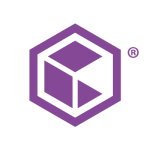Our data was on VMware VM, and we used Azure Site Recovery to replicate all data into Azure.
What I like best about Azure Site Recovery is that it's easier to use because my organization already uses Azure as an Active Directory solution, which means the organization already has a tenant. It was easier to go for Azure Site Recovery, though the solution's features can also be found in other solutions in the market.
I also found the load-balancing feature of Azure Site Recovery valuable. The solution fulfills the needs of my organization.
It was easier to configure the server in the older version of Azure Site Recovery. Still, in the newest version, the configuration was a little more complex, so this is an area for improvement in the solution.
Azure Site Recovery is a stable solution.
Azure Site Recovery is highly scalable, and even when my team did some failover testing, it was scalable.
Our Microsoft partner also provides technical support for Azure Site Recovery, and our experience with them is excellent. We were partners with them when we were using AD, and now they're also giving us technical support, so we just extended our support.
The initial setup for Azure Site Recovery wasn't that complex, though its configuration was confusing. There wasn't much documentation available on configuring Azure Site Recovery as it had just launched, so that was a bit tricky. Still, my organization was able to set it up.
My organization has a Microsoft partner who helped implement Azure Site Recovery.
I'm not sure about the Azure Site Recovery pricing, but my organization gets monthly bills from providers.
I've used Azure Site Recovery.
My organization has three Azure Site Recovery users. The service provider handles the maintenance of the solution. I own the apps, so I'm in charge of the apps, ensuring that the apps always run. Another team member works with the service provider on the security side. My organization also has an infrastructure engineer working with the service provider.
As Azure Site Recovery fulfills my organization's needs and is pretty straightforward and understandable, I rate it as eight out of ten.
I'm a customer of Microsoft.













